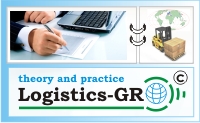Could Visual Identification Technologies Revolutionize Logistics Operations |
| Материал из категории News of logistics (in English) |
| 13.04.2013 16:40 |
|
Метки (тэги, tags): Tremendous progress is being made in the area of visual identification technology (VIT) - with potential huge implications for supply chain and logistics systems. The basic idea is this: increasingly, cameras and supporting software can be used to identify products in the same way a bar code or RFID tag might be used today. VIT systems identify products based on their image characteristic, and/or potentially specific markings. So called video or photo analytics are already starting to come to market in the supply chain. For example, at the National Retail Federation (NRF) trade show in The camera-equipment robot can move around retail shelves and capture what the correct planogram (basically, how the store shelves are supposed to be set with different products) looks like, and then at whatever frequency the merchant wants the robot re-travels the aisles looking for variances from that plan that are then communicated to store managers or others for correction. "Imager" scanners, which are essentially cameras, are increasingly making in-roads in supply chain and logistics applications too. In high speed, in-line applications such as a conveyor system, proponents of imaging technology say read rates can be much higher than traditional laser scanners, reducing problems from no reads. There is also really no reason, for example, that existing store cameras installed for security reasons could not also be connected to smart software that would send out an alert when a slot on a store shelf became empty and in need of replenishment. There are already systems that can tell if a specific individual, for example, interacted with a store associate and then whether that same person went through a POS lane for a purchase. There have been great strides in facial recognition technology generally, picking specific individuals out in photos or video based on facial characteristics of those individuals stored in a database. That sure sounds a lot harder than distinguishing between various SKUs in a distribution center. So consider something like this, for example: What if technology similar to "smart glasses" such as Google was worn workers in a DC and connected to a mobile wireless terminal. Rather than perhaps scanning each object as it is selected and placed in a shipping carton or tote, is it possible that workers could simply look at the object and the system identifies and verifies what is being picked without any scanning at all? While smart glasses today are really about projecting web and other images to a person's eyes, we assume a sort of reverse model could be made, where images are captured and sent back to a device. In fact, the web site of a company called Vuzix, a maker of smart glasses, notes on its web site an application where a person is "out shopping and spots an interesting item on the shelf. A quick snapshot of the barcode and your smart glasses enhanced app goes off to the Cloud, finds the product and competitive product and displays the data" - so that kind of image capture technology in glasses is here. The beauty of that approach versus say RFID is that it would not require each product to have a still somewhat expensive tag on it. Such a system could even work in conjunction with regular bar codes. The worker could simply look at the bar code, a much faster process than needing to scan it. That approach could be combined with a voice headset to allow the worker to correct any mistakes, such as "looking" at an extra bar code.
Source: Метки (тэги, tags): Последние похожие материалы:
Более поздние похожие материалы:
|
Последние новости на сайте
Пример материалов из категории "Задачи по логистике"
Facebook-страница
Фрагмент из задачи
Группа на Linkedin
(более 4000 участников)
Группы на Facebook
Результаты тестов
| Последние результаты | ||
|---|---|---|
| <->(Лог-М) Тема 01. Основні поняття логістики (27 тест.завдань) | 51.85 % | |
| <->(Лог-М) Тема 11. Транспортна логістика (15 тест.завдань) | 26.67 % | |
| <-->Стоит ли Вам выбирать профессию менеджера по логистике? | 64.00 % | |
| Перейти к тестам |




